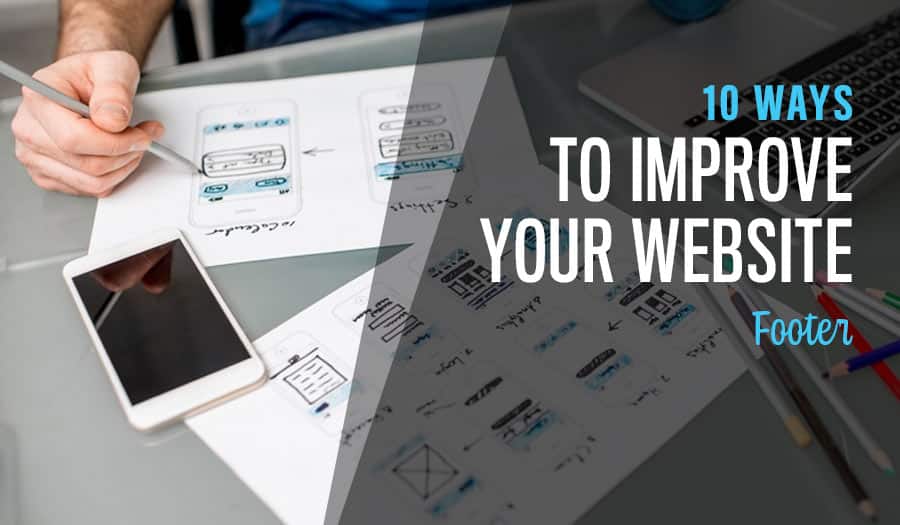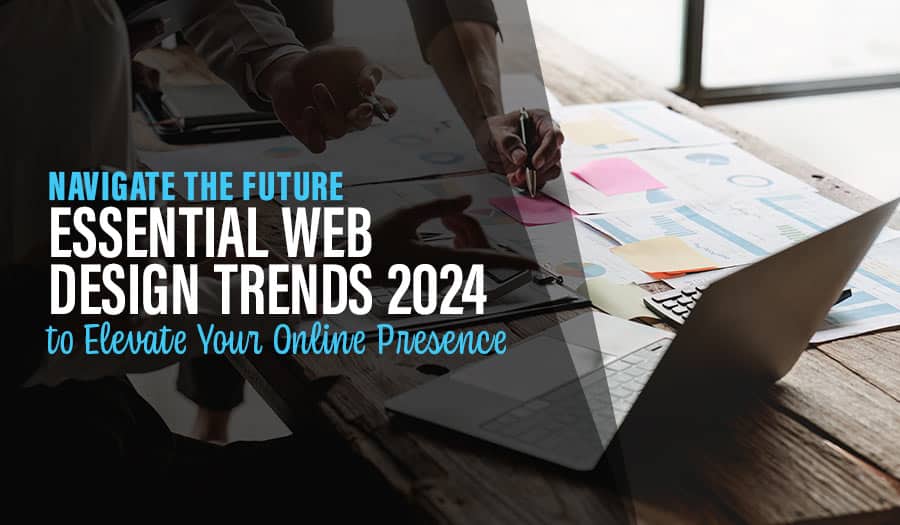Your footer is one of the essential elements of your website. While your footer may not grab your users’ attention from the get-go, it is often the first place your users will look for information, making it vital. Here are some great tips to improve your website’s footer.
When planning your web design project, the footer should never be overlooked. Taking the time to consider what content to include and how to organise this information coherently is important.
Likewise, your footer should not be ignored when revamping or looking for ways to improve your existing website.
Top 10 Tips For Improving Your Website Footer
- Perform a navigation health check
- Simplicity
- Provide Links
- Organise
- Copyright notice
- Include a Call to action
- Get graphic
- Readability
- Maintain your design aesthetic
- Consider a sub-footer
Before tweaking or adjusting your footer, ask yourself:
- Are my website footer’s design values cohesive with those of my website?
- Is my website footer too conspicuous, chaotic or cluttered?
Have you considered the footer where lost visitors will go for help? If these lost wanderers cannot navigate the footer to find the needed information, they will most likely click away from your site.
If your footer merely replicates a “mega-menu” dropdown from your header navigation (containing the same links), it will probably be useless to these lost visitors. After all, why repeat the same information below if they didn’t find what they were after in the header above?
If you think your footer could use improving, but you are not sure where to start or what information to include, here are some great tips to keep in mind for your business website footer:
Top 10 Tips For Improving Your Website Footer
1. Perform a navigation health check
To check how your current footer rates as far as navigation is concerned, you can give it a health check:
- Check the “Site Search > Queries” report in your Analytics. Make a note of what your visitors are searching for on your site.
- Next, check the “Behaviour Flow” report in Analytics. What is the top path through your website?
Now, consider:
- What do these two reports tell your visitor’s wants and needs?
- How can you make this information easier for them to find?
- Where do your visitors want to go when they reach your site?
- How can your footer aid their navigation through your site?
2. Simplicity
When working with a lot of information, clean and simple design is important. Organise with purpose and provide plenty of space to avoid confusion.
The size of your footer will depend on the overall size of your website, as the footer’s size mostly correlates to the amount of site content and the site’s number of pages. Consider each piece of information individually in your footer and why it should be there.
Regarding footer design two primary considerations should be space and spacing. Text is usually small, and space prevents your footer from looking cluttered and cramped. Space aids click-ability and tap-ability – which is vital when the items within your footer contain links.
3. Provide Links
Your users will frequently want to know who you are and what your business is about. The two most important links you can provide in your footer will go to your “About Us” and your “Contact Us” pages. This information should be easy to find.
While a link should still be provided to your Contact Us page, the main telephone number, email address and physical address should appear in your footer to make life easier for your users. Ideally, you should ensure each of these (phone/email/location) are created to auto-dial, email or call up a map when clicked.
4. Organise
Grouping is a great way to organise your links and information. You can use several columns (or rows) of relevant information in groupings, such as services, social media, links and contact information. You don’t want lost visitors clicking away – grouping is a great way to help make information easier to find.
5. Copyright notice
It may be small, but this single line (usually including a year of publication and the name of the copyright owner) is important. If you don’t already have one, why not design it to integrate with the rest of your footer? Even if your copyright notice is just a single line of text at the bottom of your page, it is essential to have it. However you choose to incorporate it, just don’t forget it!
6. Include a Call to action
Always include a call to action in your footer. Suppose a user is after more information has navigated to your footer. Why not seize the opportunity and encourage them to fill in a contact form, follow you on social media or sign up for your newsletter? There is value in the footer space for converting clicks, so ensure your call to action is easy to see.
7. Get graphic
To avoid your footer looking like a block of text, add some graphic elements, such as logos and icons, to create visual interest. Footers are usually hierarchical: the critical information sits towards the top, with details of lesser importance (such as copyright notices) sitting lower. When using graphic elements, balance your footer visually and maintain any relevant groupings.
8. Readability
Footers generally contain small text that is usually a few points smaller than the text used in the main body of the site. Text, icons and images must remain readable in whatever sizes you choose.
Take a look at your footer from a user’s point of view by taking the time to use it. Go ahead and click through the links from both a desktop and mobile device. Each element should also be large enough that they are easy to click or tap on.
As everything in the footer is generally smaller than the rest of your site, the colour, weight and contrast between text and background need careful attention. Simple fonts and high contrast (think white background/black text or dark background/white text) are best for keeping text readable.
9. Maintain your design aesthetic
Consider whether your footer matches your website’s overall design theme. You can improve the look of your entire site by ensuring your footer mirrors the style, graphic elements and colours found across the rest of your site. You don’t want your footer to look cut and pasted from somewhere else!
10. Consider a sub-footer
Your sub-footer is your footer’s footer. A sub-footer is usually where the boring stuff goes, simply because it has to go somewhere! Think Terms of Use, Disclaimers, Privacy Policy, Security Certificates and the Copyright Notice. It isn’t uncommon to place the Site Map here. Your site map helps search engines index pages or URLs on your website. Rearranging your current layout to include a sub-footer can help your footer appear clean and uncluttered, even when it contains all the information it held previously.
The good news is, a sub-footer doesn’t have to be boring! You can use it to highlight your accolades or insert your call to action. Ideally, your sub-footer becomes another layer in your hierarchy of information. Levels of navigation often make it easier for users to skim and click through.
Taking a second look at your footer is well worth your time, energy and effort. After all, your footer provides a wealth of important information to your user, from who you are to where you are, from what your website is about to how to navigate it. Including the right mix of information, graphic elements and functionality will ensure your footer is a usable tool.
To get the best out of your website, every element should work with you to the same end – even the humble footer! To ensure you have the right mix of content, aesthetics and structure in your website footer design, simply click here to contact us to arrange a chat with the team at Pixel Fish.
Whether it’s an element of your site – such as the footer – or the overall web design you’re after, the team at Pixel Fish would love to discuss your project with you.
Let Sydney’s leading Web Design Agency take your business to the next level with a Pixel Fish Small Business Website.
Check out some of our latest Website Design projects and Testimonials.
Further Information
How to Create a Saleable Business Using Your Website
Top 5 Online Learning Platforms to Help You Grow as a Business Leader
10 Tips to Becoming a Thought Leader in Your Industry
Top 10 Ways to Use QR Codes to Promote Your Business and Your Website
Top Reasons Why Your Website Speed Impacts Your Business
Top 20 Website Accessibility Tips for Creating a W3C Website
How to Set Up Your Home Office for Video Meetings
Top 5 Web Browsers for WordPress Website Editing
Website Platform Review: Squarespace vs WordPress
10 Best Practices for a Successful WordPress Website Design Project



